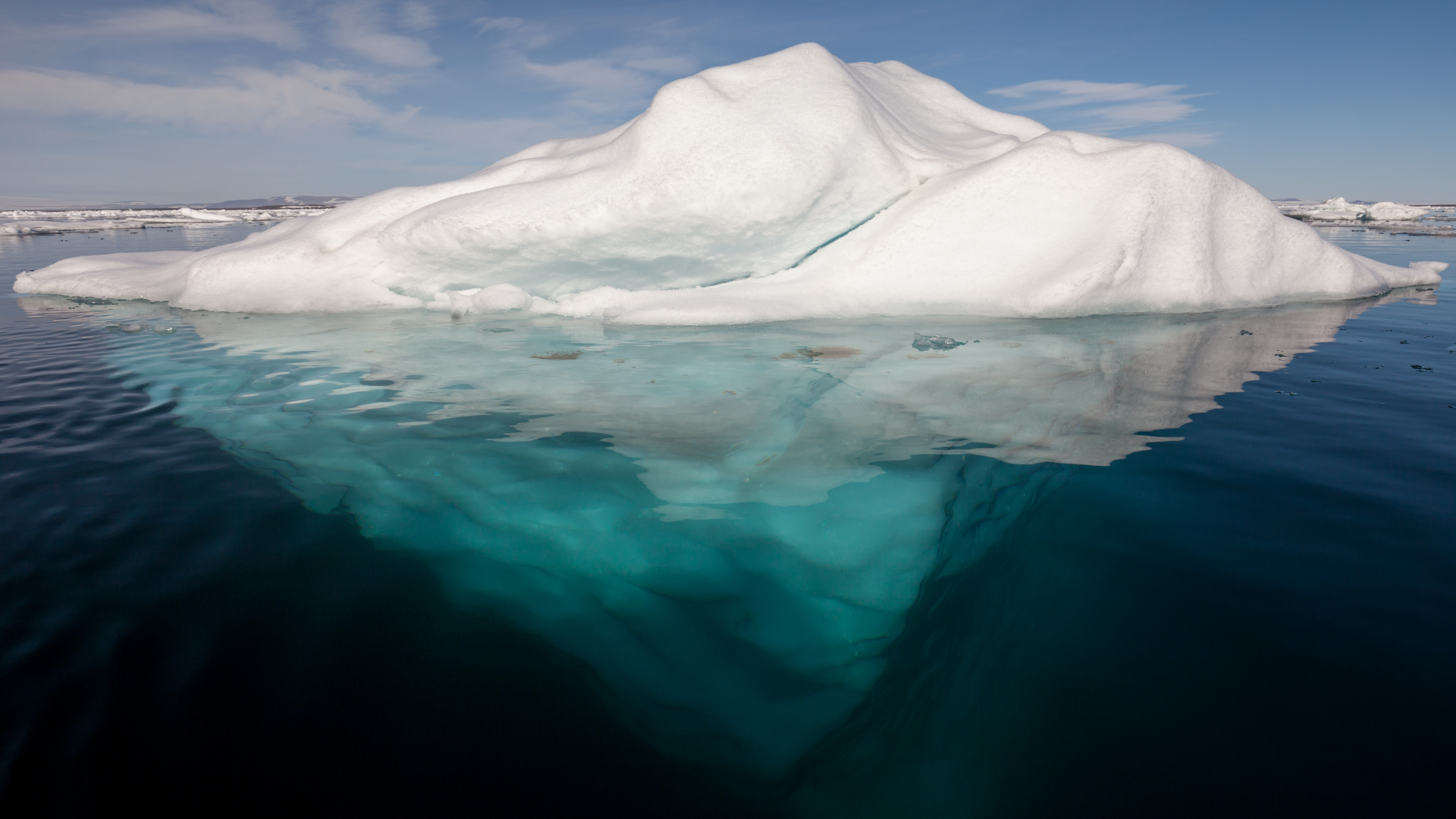|
Amery Ice Shelf
The Amery Ice Shelf () is a broad ice shelf in Antarctica at the head of Prydz Bay between the Lars Christensen Coast and Ingrid Christensen Coast. It is part of Mac. Robertson Land. The name "Cape Amery" was applied to a coastal angle mapped on 11 February 1931 by the British Australian New Zealand Antarctic Research Expedition (BANZARE) under Douglas Mawson. He named it for William Bankes Amery, a civil servant who represented the United Kingdom government in Australia (1925–28). The Advisory Committee on Antarctic Names interpreted this feature to be a portion of an ice shelf and, in 1947, applied the name Amery to the whole shelf. In 2001 two holes were drilled through the ice shelf by scientists from the Australian Antarctic Division and specially designed seabed sampling and photographic equipment was lowered to the underlying seabed. By studying the fossil composition of sediment samples recovered, scientists have inferred that a major retreat of the Amery Ice Shelf to ... [...More Info...] [...Related Items...] OR: [Wikipedia] [Google] [Baidu] |
Antarctica
Antarctica () is Earth's southernmost and least-populated continent. Situated almost entirely south of the Antarctic Circle and surrounded by the Southern Ocean, it contains the geographic South Pole. Antarctica is the fifth-largest continent, being about 40% larger than Europe, and has an area of . Most of Antarctica is covered by the Antarctic ice sheet, with an average thickness of . Antarctica is, on average, the coldest, driest, and windiest of the continents, and it has the highest average elevation. It is mainly a polar desert, with annual precipitation of over along the coast and far less inland. About 70% of the world's freshwater reserves are frozen in Antarctica, which, if melted, would raise global sea levels by almost . Antarctica holds the record for the lowest measured temperature on Earth, . The coastal regions can reach temperatures over in summer. Native species of animals include mites, nematodes, penguins, seals and tardigrades. Where vegetation o ... [...More Info...] [...Related Items...] OR: [Wikipedia] [Google] [Baidu] |
Lambert Glacier
Lambert Glacier is a major glacier in East Antarctica. At about 50 miles (80 km) wide, over 250 miles (400 km) long, and about 2,500 m deep, it is the world's largest glacier. It drains 8% of the Antarctic ice sheet to the east and south of the Prince Charles Mountains and flows northward to the Amery Ice Shelf. It flows in part of Lambert Graben and exits the continent at Prydz Bay. This glacier was delineated and named in 1952 by American geographer John H. Roscoe who made a detailed study of this area from aerial photographs taken by Operation Highjump, 1946–47. He gave the name "Baker Three Glacier", using the code name of the Navy photographic aircraft and crew that made three flights in this coastal area in March 1947 resulting in geographic discoveries. The glacier was described in Gazetteer No. 14, ''Geographic Names of Antarctica'' (U.S. Board on Geographic Names, 1956), but the feature did not immediately appear on published maps. As a result the name Lam ... [...More Info...] [...Related Items...] OR: [Wikipedia] [Google] [Baidu] |
Ice Shelves Of Antarctica
This is a list of Antarctic ice shelves. Ice shelves are attached to a large portion of the Antarctic coastline. Their total area is 1,541,700 km2. Names are also listed in the Scientific Committee on Antarctic Research, Gazetteer. The ice shelf areas are listed below, clockwise, starting in the west of East Antarctica: :† Indicates that the ice shelf has collapsed. See also * List of Antarctic ice streams *List of glaciers in the Antarctic There are many glaciers in the Antarctic. This set of lists does not include ice sheets, ice caps or ice fields, such as the Antarctic ice sheet, but includes glacial features that are defined by their flow, rather than general bodies of ice. Th ... * Retreat of glaciers since 1850 References {{Authority control Ice shelves Antarctic ice shelves ... [...More Info...] [...Related Items...] OR: [Wikipedia] [Google] [Baidu] |
Twilight Bay
Twilight Bay () is a small re-entrant of the ice shelf An ice shelf is a large floating platform of ice that forms where a glacier or ice sheet flows down to a coastline and onto the ocean surface. Ice shelves are only found in Antarctica, Greenland, Northern Canada, and the Russian Arctic. The ... into the plateau on the west side of the Amery Ice Shelf. Photographed from ANARE ( Australian National Antarctic Research Expeditions) aircraft in 1956. The position of the feature was fixed by ANARE survey party in February 1968. So named because the survey party was flown into the area after sunset, necessitating navigation and photo identification in twilight. Bays of Mac. Robertson Land {{MacRobertsonLand-geo-stub ... [...More Info...] [...Related Items...] OR: [Wikipedia] [Google] [Baidu] |
Belgian Antarctic Program
Belgium was one of the 12 countries that initially negotiated and signed the Antarctic Treaty (Washington, 1959).Belgian Polar Science History , from the official website of the Belgian Science Policy History The first Belgian expedition of scientific nature was led by aboard the '' Belgica''. The expedition involved over wintering and spanned from 1897 to 1899. The findings of the expedition were put down as series of ''R ...[...More Info...] [...Related Items...] OR: [Wikipedia] [Google] [Baidu] |
King Baudouin Ice Shelf
The King Baudouin Ice Shelf (also called Roi Baudouin Ice shelf, from French: Plateforme de glace Roi Baudouin) in Dronning Maud Land, East Antarctica, is within the Norwegian part of Antarctica. It is named after King Baudouin of Belgium (1930-1993). Geology The King Baudouin ice shelf is confined by two ice rises (including Derwael Ice Rise) and one under-ice pinning-point with a width of only a few kilometres; the latter seems to define the seaward edge of the ice shelf and impacts ice flow in the hinterland.Be:Wise -The Buttressing Effect: Why ice shelves are essential antarcticstation.org, 12 November 2012, accessed 14 January 2015 Roi Baudoin Base Belgium was one of the original 12 sign ...[...More Info...] [...Related Items...] OR: [Wikipedia] [Google] [Baidu] |
The Guardian
''The Guardian'' is a British daily newspaper. It was founded in 1821 as ''The Manchester Guardian'', and changed its name in 1959. Along with its sister papers ''The Observer'' and ''The Guardian Weekly'', ''The Guardian'' is part of the Guardian Media Group, owned by the Scott Trust. The trust was created in 1936 to "secure the financial and editorial independence of ''The Guardian'' in perpetuity and to safeguard the journalistic freedom and liberal values of ''The Guardian'' free from commercial or political interference". The trust was converted into a limited company in 2008, with a constitution written so as to maintain for ''The Guardian'' the same protections as were built into the structure of the Scott Trust by its creators. Profits are reinvested in journalism rather than distributed to owners or shareholders. It is considered a newspaper of record in the UK. The editor-in-chief Katharine Viner succeeded Alan Rusbridger in 2015. Since 2018, the paper's main news ... [...More Info...] [...Related Items...] OR: [Wikipedia] [Google] [Baidu] |
Iceberg
An iceberg is a piece of freshwater ice more than 15 m long that has broken off a glacier or an ice shelf and is floating freely in open (salt) water. Smaller chunks of floating glacially-derived ice are called "growlers" or "bergy bits". The sinking of the ''Titanic'' in 1912 led to the formation of the International Ice Patrol in 1914. Much of an iceberg is below the surface, which led to the expression "tip of the iceberg" to illustrate a small part of a larger unseen issue. Icebergs are considered a serious maritime hazard. Icebergs vary considerably in size and shape. Icebergs that calve from glaciers in Greenland are often irregularly shaped while Antarctic ice shelves often produce large tabular (table top) icebergs. The largest iceberg in recent history (2000), named B-15, measured nearly 300 km × 40 km. The largest iceberg on record was an Antarctic tabular iceberg of over [] sighted west of Scott Island, in the South Pacific Ocean, by the USS Glacier ... [...More Info...] [...Related Items...] OR: [Wikipedia] [Google] [Baidu] |
Amery Iceberg Animation
Amery may refer to: People * Bill Amery, Australian rules footballer * Charlie Amery (1910–1979), British footballer * Jean Améry (1912–1978), Austrian author * John Amery (1912–1945), British fascist, executed for treason * Julian Amery, Baron Amery of Lustleigh, British Conservative politician * Leo Amery (1873–1955), British Conservative politician, Secretary of State for India, father of John and Julian * Les Amery, former Australian rules footballer * Mickey Amery, Canadian politician * Moe Amery, former member of the Legislative Assembly of Alberta * Richard Sanderson Amery, Australian former politician * Shenda Amery, painter and sculptor * William Bankes Amery, British painter and sculptor Places * Amery, Manitoba * Amery railway station, in Amery, Manitoba, Canada * Amery, Western Australia, rail siding * Amery, Wisconsin, city in Polk County * Amery Ice Shelf The Amery Ice Shelf () is a broad ice shelf in Antarctica at the head of Prydz Bay between the Lars ... [...More Info...] [...Related Items...] OR: [Wikipedia] [Google] [Baidu] |
Ross Ice Shelf
The Ross Ice Shelf is the largest ice shelf of Antarctica (, an area of roughly and about across: about the size of France). It is several hundred metres thick. The nearly vertical ice front to the open sea is more than long, and between high above the water surface. Ninety percent of the floating ice, however, is below the water surface. Most of Ross Ice Shelf is in the Ross Dependency claimed by New Zealand. It floats in, and covers, a large southern portion of the Ross Sea and the entire Roosevelt Island located in the east of the Ross Sea. The ice shelf is named after Sir James Clark Ross, who discovered it on 28 January 1841. It was originally called "The Barrier", with various adjectives including "Great Ice Barrier", as it prevented sailing further south. Ross mapped the ice front eastward to 160° W. In 1947, the U.S. Board on Geographic Names applied the name "Ross Shelf Ice" to this feature and published it in the original U.S. Antarctic Gazetteer. In Januar ... [...More Info...] [...Related Items...] OR: [Wikipedia] [Google] [Baidu] |
Progress Station
Progress (russian: Прогресс) is a Russian (formerly Soviet) research station in Antarctica. It is located at the Larsemann Hills antarctic oasis on the shore of Prydz Bay. The station was established by the 33rd Soviet Antarctic Expedition on April 1, 1988, and was moved to another place on February 26, 1989 In 2000, work was temporarily halted but it reopened in 2003. A landing field is located close to the station for air connection with other stations. From 1998 to 2001 works were performed to transfer transportation operations to Progress from the Mirny Station and make it the main support base for Vostok station. In 2004, work began on a year-round facility at the station. On October 4, 2008, a fire broke out at the construction site resulting in the death of a construction worker and two serious injuries. The fire resulted in the complete loss of the new structure, as well as damage to the station's communications and scientific equipment. In 2013, the const ... [...More Info...] [...Related Items...] OR: [Wikipedia] [Google] [Baidu] |




_(cropped).jpg)


